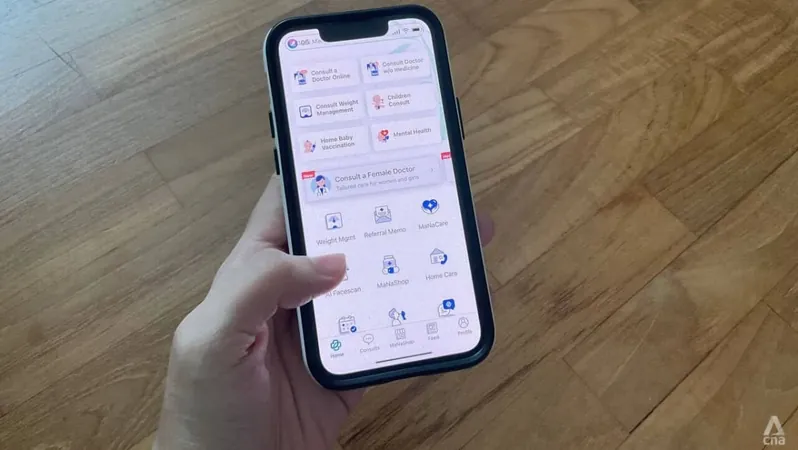
Revolutionizing Hepatitis C Screening: Emergency Departments Could Safeguard Lives and Slash Treatment Costs!
2024-11-05
Author: Siti
Revolutionizing Hepatitis C Screening: Emergency Departments Could Safeguard Lives and Slash Treatment Costs!
A groundbreaking study suggests that implementing hepatitis C virus (HCV) screenings in emergency departments could significantly reduce potential liver complications while also cutting down on treatment costs over the long term. This revelation has sparked fresh discussions about how healthcare can be improved in high-risk populations.
The research, led by Sun A. Choi from the University of Illinois at Chicago's College of Pharmacy, underscores a critical gap in the U.S. healthcare system: routine HCV screenings are often not covered by insurers in non-primary care environments. This study advocates for a novel approach where emergency departments (EDs) take on the role of proactive screening centers for vulnerable patients less likely to receive care elsewhere.
Choi's team highlighted that while previous studies have demonstrated the feasibility of ED-based HCV screening, understanding the economic implications is essential for policymakers. They sought to assess the long-term cost-effectiveness of routine HCV screenings in EDs, particularly focusing on those at high infection risk.
Study Design and Insights
This research utilized the Project HEAL initiative, which stands for HIV & HCV Screening, Education, Awareness, and Linkage-to-Care, implemented by the University of Illinois Hospital and Health Sciences System. Under this project, patients presenting in the ED were provided with an opt-out HCV screening if they were identified as being at high risk. Those who tested positive were then connected to necessary healthcare services.
To conduct the analysis, the researchers developed a decision-analytic Markov model, simulating HCV screening processes within EDs and the condition's natural progression. Over a 30-year span with annual cycles, the model tracked patients who had not avoided screening for HCV antibodies, leading to a follow-up RNA test for those who received positive results.
All participants who underwent this emergency screening were subsequently referred for Direct-Acting Antiviral (DAA) therapy, irrespective of their fibrosis stage.
Key Findings
The analysis revealed that for unscreened and untreated individuals who later received DAA therapy at various fibrosis stages (F1, F2, F3, or compensated cirrhosis), the incremental cost-effectiveness ratio (ICER) ranged from an impressive $6,084 to $77,063 per quality-adjusted life-year (QALY) gained. However, if patients waited until they had developed decompensated cirrhosis to initiate treatment, the cost-effectiveness sharply declined.
Overall, the findings emphatically concluded that emergency department screening and linkage-to-care pathways are not only effective but also cost-efficient, with a willingness-to-pay (WTP) threshold set at $100,000/QALY across all scenarios examined.
“This pioneering study is the first of its kind to assess the cost-effectiveness of emergency department-based HCV screening using real-world data in the United States,” the investigators noted, emphasizing the potential for screening to mitigate severe hepatic complications and lower the overall costs of HCV treatment.
Why This Matters
By facilitating HCV screenings in emergency departments, healthcare providers can identify and treat infections early on, ultimately benefiting both patients and the healthcare system as a whole. This approach promises both to improve patients' quality of life and to alleviate the financial burden of late-stage liver diseases on medical resources.
As the healthcare landscape evolves, the integration of innovative screening methods in emergency settings may pave the way for more accessible, affordable, and effective care for those at risk. Will these findings prompt a shift in policy and practice? Only time will tell, but advocates for preventive medicine are hopeful.



 Brasil (PT)
Brasil (PT)
 Canada (EN)
Canada (EN)
 Chile (ES)
Chile (ES)
 España (ES)
España (ES)
 France (FR)
France (FR)
 Hong Kong (EN)
Hong Kong (EN)
 Italia (IT)
Italia (IT)
 日本 (JA)
日本 (JA)
 Magyarország (HU)
Magyarország (HU)
 Norge (NO)
Norge (NO)
 Polska (PL)
Polska (PL)
 Schweiz (DE)
Schweiz (DE)
 Singapore (EN)
Singapore (EN)
 Sverige (SV)
Sverige (SV)
 Suomi (FI)
Suomi (FI)
 Türkiye (TR)
Türkiye (TR)